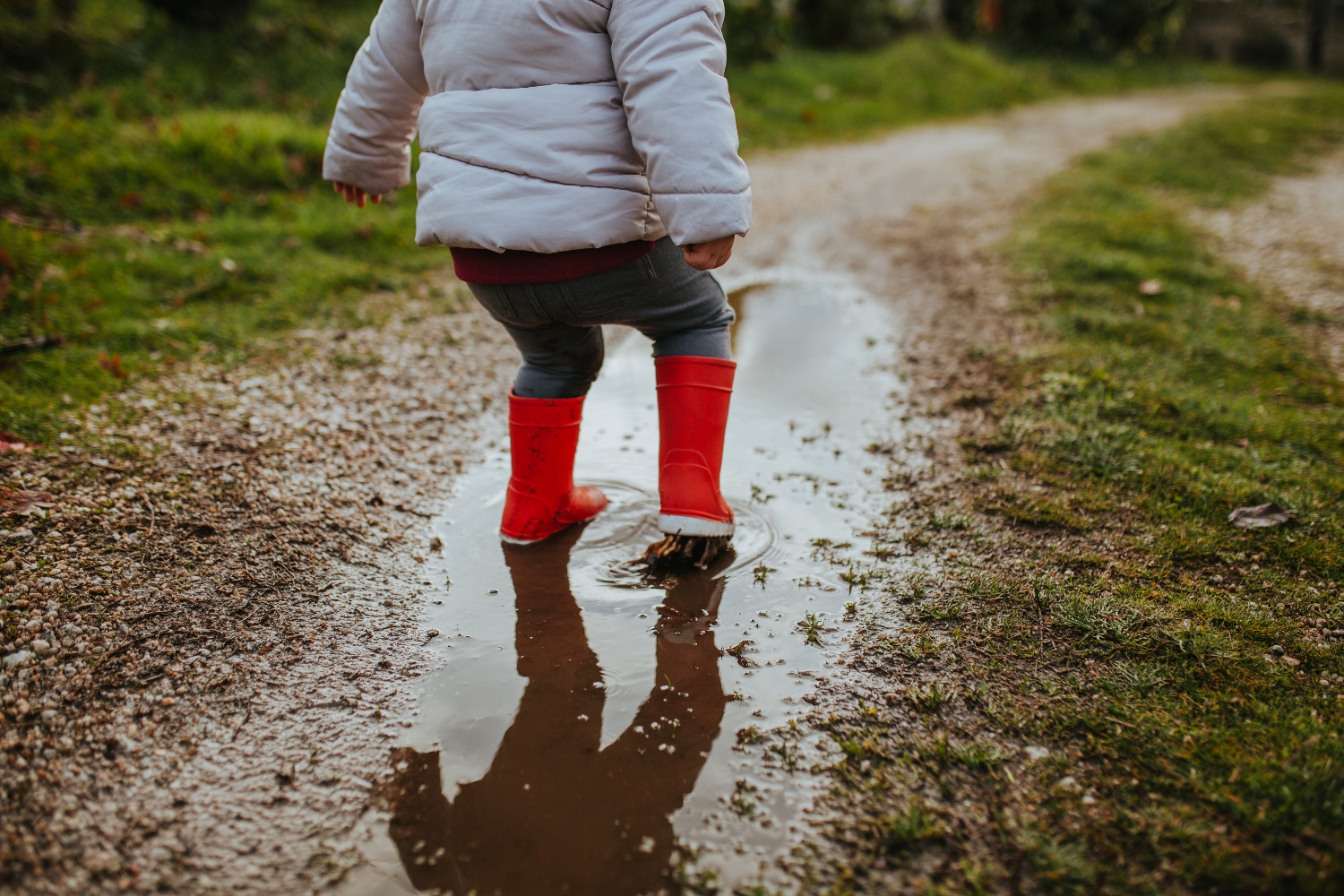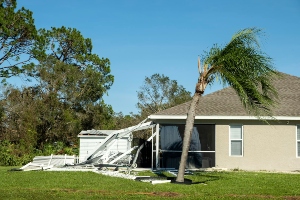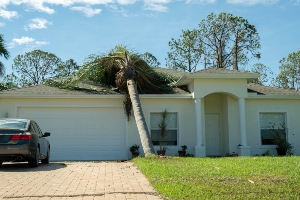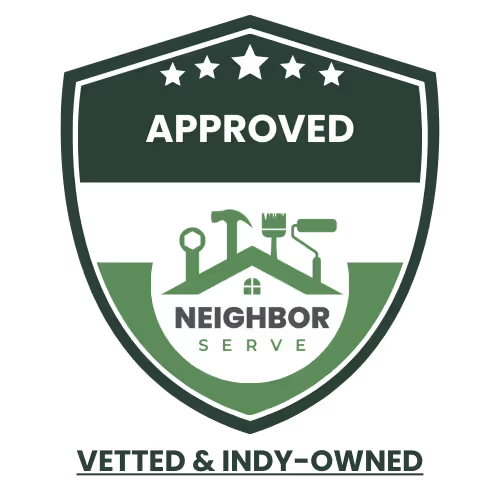A soggy yard can turn your outdoor space into a muddy mess. The good news is you don't need expensive solutions to fix this common problem, simple changes to your landscape and some yard drainage solutions can redirect water away from problem areas without draining your wallet
Whether it's creating proper grading, installing a DIY French drain, or adding water-loving plants, there are many ways to manage excess moisture in your yard.
We've gathered the most effective solutions for poor drainage that you can tackle yourself. These fixes range from quick weekend projects to more involved improvements that will keep your yard dry for years to come.
In this article, you’ll learn effective yard drainage solutions to prevent flooding, protect your foundation, and fix soggy spots in your landscape.
Below, we’ll walk through each important aspect:
- How to tell if your yard has a drainage problem
- Common yard drainage solutions and how they work
- Affordable vs. long-term fixes: What's right for your yard?
- How Michaelis designs custom drainage solutions
Keep reading! With the right approach, you can transform your soggy yard into a usable, attractive outdoor space.
How to tell if your yard has a drainage problem
Poor drainage can damage your lawn, harm your home's foundation, and create unwanted mosquito breeding grounds. Identifying these issues early helps you solve them before they become expensive problems.
Standing water after rain: When is it a red flag?
A little standing water right after heavy rain is normal. However, if puddles remain in your yard for more than 24 hours, you likely have a drainage problem.
Watch where water collects during rainfall. Make note of low spots that consistently hold water. These areas indicate poor drainage that needs attention.
Healthy yards should absorb water within a few hours after rain stops. If your yard stays soggy for days, your soil might be compacted or have a high clay content that prevents proper absorption.
Try this simple test: Dig a hole about 12 inches deep and fill it with water. If it doesn't drain within 12 hours, your soil has drainage issues that need addressing.
Soil erosion and patchy grass areas
Eroding soil and patchy grass are clear signs of drainage problems. When water can't soak in properly, it flows across your yard, carrying soil and grass seed with it.
Look for these tell-tale signs:
- Bare soil patches where grass won't grow
- Yellowing or dying grass in certain areas
- Visible channels where water has carved paths
- Soil washing onto sidewalks or driveways
Moss and mushroom growth also indicate excessive moisture. These plants thrive in wet conditions that normal grass doesn't tolerate.
Patchy grass often forms in low spots where water pools regularly. The roots essentially drown from too much water, creating dead zones in your lawn.
Water pooling near your foundation or crawlspace
Water collecting near your home's foundation is more than a yard problem, it's a potential threat to your home's structural integrity.
Check these areas after rainfall:
- The soil around your foundation
- Basement walls for dampness or water marks
- Crawlspace for standing water or high humidity
Moisture against your foundation can lead to cracks, leaks, and even structural damage over time. In crawlspaces, excess moisture creates ideal conditions for mold growth and wood rot.
Proper grading should direct water away from your home. If you notice water flowing toward your foundation instead of away from it, you have a drainage issue that needs immediate attention.
Common yard drainage solutions and how they work
Fixing a soggy yard requires understanding which drainage solution best fits your property's needs. Several effective methods can redirect water away from problem areas and prevent pooling that damages grass and plants.
French drains: Redirecting water underground
French drains are trenches filled with gravel and a perforated pipe that collect and redirect water away from wet areas. They work by creating an easy path for water to follow underground instead of pooling on the surface.
To install a French drain, we dig a sloped trench about 18-24 inches deep, line it with landscape fabric, add gravel, and place a perforated pipe inside. The pipe carries water to a better drainage area like a street drain or dry creek bed.
French drains are especially effective for:
- Areas between properties
- Spots where water consistently pools
- Around foundation perimeters
The typical cost ranges from $10-$30 per linear foot for DIY installation. Professional installation might cost $25-$50 per foot but ensures proper sloping and placement.
Dry wells: Low-cost water collection that works
Dry wells are underground structures that collect runoff water and slowly release it into the surrounding soil. They're perfect for areas where directing water elsewhere isn't practical.
A basic dry well consists of a hole filled with gravel or a prefabricated container with holes. Water enters through pipes connected to downspouts or surface drains and gradually seeps into the surrounding soil.
Installation steps:
- Dig a hole 3-4 feet deep
- Line with landscape fabric
- Fill with gravel or place prefabricated container
- Connect inlet pipes
- Cover with soil and vegetation
Dry wells work best in soils with decent percolation rates. In clay-heavy soils, larger wells or multiple wells may be necessary to handle the same water volume.
Grading and landscaping for better water flow
Proper yard grading creates slopes that naturally direct water away from structures and problem areas. This is often the simplest solution for minor drainage issues.
The ideal grade slopes away from your home at a rate of about 1 inch per foot for the first 10 feet. Beyond that, gentler slopes can continue directing water to appropriate drainage areas.
Effective grading techniques include:
- Adding soil to create mounds in low spots
- Installing swales (shallow ditches) to channel water
- Using berms (raised ridges) to redirect flow patterns
Adding compost to heavy soil improves drainage by attracting beneficial microbes and earthworms that loosen soil particles. Aeration also helps by creating thousands of small holes that allow water to penetrate rather than pool on the surface.
Surface drains and catch basins: When to use them
Surface drains and catch basins collect water at low points and direct it away through underground pipes. They're ideal for areas where water naturally collects or where other solutions aren't feasible.
A catch basin is essentially a drum in the ground with a grate on top and pipes attached that allow water to drain away. These systems continue working regardless of soil compaction or ground saturation.
Key considerations for installation:
- Place at the lowest point of the problem area
- Ensure proper slope in connecting pipes (1/4 inch per foot minimum)
- Direct outflow to appropriate areas like street drains or rain gardens
- Maintain regularly by cleaning debris from grates
For paved areas like driveways or patios, channel drains work well. These are long, narrow drains with grates that collect water across a wider surface before directing it to a drainage system.
Affordable vs. long-term fixes: What's right for your yard?
Choosing the right drainage solution depends on your budget, yard conditions, and how long you need the fix to last. Some options provide quick relief while others offer permanent solutions to soggy yard problems.
According to This Old House, nearly 25% of home insurance claims from 2018 to 2022 were due to water damage or freezing, with an average repair cost of around $14,000 per incident—emphasizing the financial risks of poor yard drainage and the importance of drain installation to prevent yard flooding
Quick fixes vs. full drainage systems
Quick fixes like top-dressing with compost and sand can improve minor drainage issues at a low cost. These solutions work by enhancing soil structure and increasing organic content, which helps water move through your soil better.
For temporary or seasonal problems, redirecting downspouts away from problem areas can make a big difference. Rain barrels can also capture water before it reaches your yard.
Full drainage systems, while more expensive, provide lasting solutions. French drains, which use perforated pipes in gravel-filled trenches, move water away from problem areas effectively. These systems typically cost more upfront but require less maintenance over time.
We recommend quick fixes for occasional puddles and full systems for yards with persistent flooding issues.
When gravel-filled trenches are enough
Gravel-filled trenches work well for yards with moderate drainage problems. They're a middle-ground solution between simple fixes and complete drainage systems.
These trenches create pathways for water to flow away from problem areas. They're especially effective when:
- Water pools in specific spots rather than throughout the yard
- Your soil has some drainage capability but gets overwhelmed during heavy rain
- You need a solution that lasts several years but can't invest in a full system
A basic gravel trench costs less than a French drain system but offers more durability than surface solutions. For best results, we recommend digging trenches 12-18 inches deep and filling them with clean gravel.
Pros and cons of DIY yard drainage
Pros:
- Cost savings on labor (typically 40-60% of project costs)
- Work can be completed on your schedule
- Satisfaction of solving the problem yourself
- Ability to make adjustments as you go
Cons:
- Risk of incorrect installation leading to continued problems
- Physical labor can be demanding
- May lack proper equipment for larger projects
- Potential to miss underlying issues a professional would catch
DIY solutions work best for simple projects like installing small drainage ditches or redirecting downspouts. For serious water issues affecting your home's foundation or requiring complex grading, professional help ensures proper installation.
We recommend starting with smaller DIY projects to see if they resolve your issues before investing in larger solutions.
How Michaelis designs custom drainage solutions
Michaelis tackles soggy yard problems with precision engineering and decades of experience. Their approach combines thorough assessment with customized solutions that protect both your landscape and home structure.
Site evaluation and water flow analysis
At Michaelis, we begin every drainage project with a comprehensive site evaluation. Our experts examine the entire property to identify low spots, soil composition, and existing water patterns.
We use specialized tools to track how water moves across your yard during rainfall. This helps us pinpoint exactly where water collects and why it's not draining properly.
Our team measures ground slopes and identifies any contributing factors like downspouts, neighboring properties, or underground issues. We don't guess—we analyze.
This thorough approach allows us to create a drainage plan that addresses the root causes of your wet yard, not just the symptoms. We'll explain our findings in simple terms so you understand exactly what's happening.
Drain Installation that protects your foundation
Michaelis specializes in French drain systems designed specifically for Indianapolis homes. We place these drains strategically to intercept water before it reaches your foundation.
Our installation process includes:
- Digging trenches along natural water flow paths
- Lining trenches with high-quality landscape fabric
- Installing properly-sized perforated pipes
- Covering with the right gravel for maximum drainage
We connect these systems to safe discharge points away from your home. This prevents water from pooling near your foundation walls.
Unlike quick fixes, our drainage solutions address the complete water pathway. We make sure water has somewhere to go after it enters the drain system.
Long-term waterproofing and yard stabilization
We don't just solve today's drainage problems—we prevent tomorrow's issues too. Our systems include waterproofing measures that protect your property for years.
Michaelis incorporates erosion control techniques to stabilize soil and prevent future washouts. This may include strategic grading, reinforced edges, or specialized plantings.
Our drainage solutions work with your existing landscape, not against it. We can blend functional drainage with attractive features that enhance your yard's appearance.
We stand behind our work with a satisfaction guarantee. You don't pay until your drainage solution is working properly and your yard is staying dry.
Conclusion
Fixing a soggy yard doesn't have to be complicated or expensive. With the right approach, you can transform your wet backyard into a functional, enjoyable space.
Remember that understanding your yard's specific drainage issues is the first step toward finding an effective solution. Whether it's poor soil composition, improper grading, or high clay content, identifying the problem points you toward the right fix.
Simple solutions like top-dressing with compost and sand can improve soil structure. For more persistent problems, trenches or French drains might be necessary to direct water away from problem areas.
Natural options such as pine flakes can provide quick relief for muddy spots. These absorb excess moisture and stay on the soil surface, making them particularly useful for high-traffic areas.
We recommend starting with the least invasive solutions before moving to more complex fixes. Often, small changes can make a big difference in your yard's drainage.
With patience and the right techniques, your once-soggy yard can become a dry, usable space for all your outdoor activities. Your backyard will thank you, and so will your shoes!
Protect your yard and foundation, schedule a professional drain installation or yard drainage evaluation to stop water problems before they get worse.




.avif)

